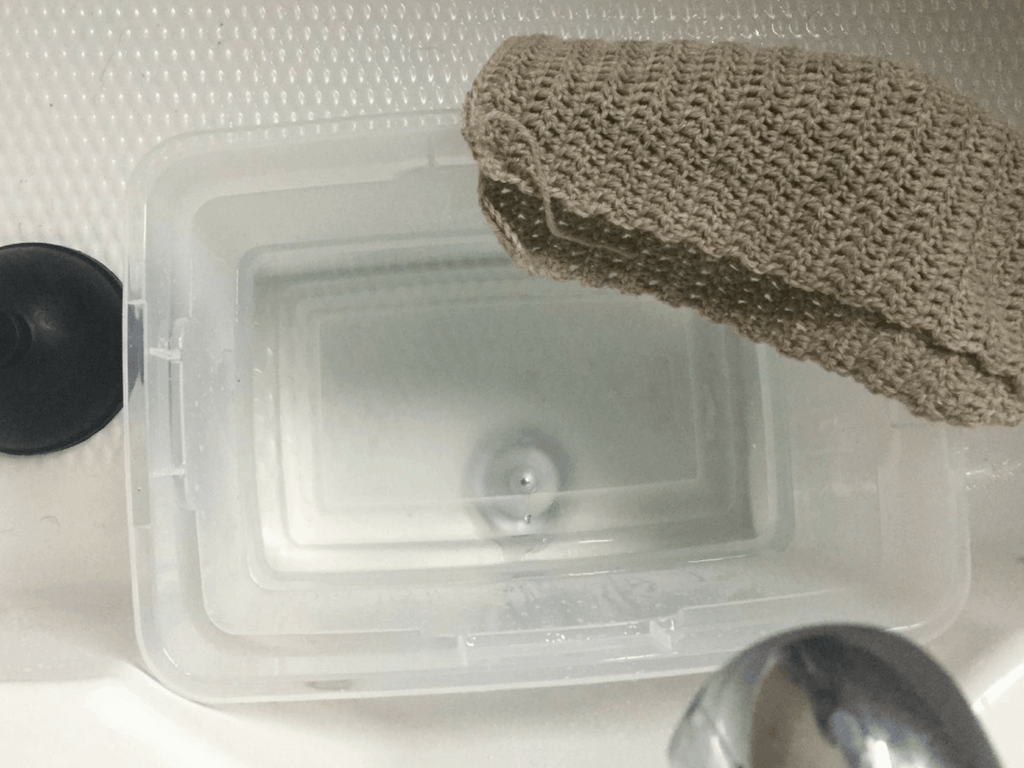How to Intentionally Felt Wool
This post may contain affiliate links, meaning that I may earn a small commission if you make a purchase. See our disclosure policy for more information.
I recently tried my hand at felting wool annnnnd I fell just a little bit in love. For years I have been intimidated by it and as it turns out, it is so much easier than I thought! Doh! If you’ve been intimidated also, read on to learn how to felt wool!
How to Felt Wool
Felting is the process in which fibers of certain kinds of yarn rub together and fuse, turning into a much more dense fabric than possible in its raw, wooly state. Your finished product feels like a thicker version of the felt you would buy at the craft store. All that is required is wool, hot water and friction.
Mind = blown.

What kind of yarn? Felting works best when using 100% wool as it has fibers that will bind together, unlike acrylic yarn. So stay away from the acrylic, yo! (and any yarn that states Superwash on the label, it is made to resist felting)

I have noticed that a wool blend will work, but your best results will always be with 100% wool, which you can find at any craft store or online (and in a much wider variety of colors). Be sure to read the yarn label, some even state “for felting” although that is not a requirement for your piece to turn out beautifully.
During the process your project will shrink. The amount of shrinkage depends on how long the piece is felted. Take this into account when planning for a specific item (ie: Kindle cover etc) so that it does not come out too small. Felting also works best when you are knitting or crocheting a little on the loose side. So I went up a hook size and crocheted as normal. You know, cause size matters.

You can use a washing machine (top loader only, unless you can open your front loader mid-cycle) or you can felt manually with a large bucket and a CLEAN toilet plunger.

Hand Felting:
Gather your supplies and meet me at the bathtub.
Wanna save this for later?
Using a large tub and a plunger, we are going to agitate the wool into felting. Make it angry! Haha!! Fill the tub with HOT water. Submerge the piece and plunge away. It may take a few minutes before you start to see a change, it could take up to twenty five minutes for the entire process. Just keep going until you’re satisfied.
Check the work every so often to see that it is felting evenly etc. This is my piece after five minutes. It’s getting felty y’all:

When desired felt level is reached, pull it out and lay on a towel, pressing firmly to remove excess water. You’ll now want to block your piece, meaning that you lay it out in the shape you wish it to dry. Use pins if needed to keep the edges in place until dry.
Oooooh, felty

For a top-loading washing machine:
I found it best to use a laundry bag when felting. Some of the yarn fibers will naturally be shook loose during the process, and this is completely natural. Because of this though, I like to felt the item itself with nothing else in the process. Some folks like to use the washing machine agitation (top loader) and some folks like to add additional agitation elements such as tennis balls, old jeans etc.
Set your washer to the the lowest water setting, using hot/cold. The heat causes the felting to occur, the cold rinse locks in into place. You want the load set on heavy if possible. Adding soap is not completely necessary, but ideally you’d use soap for washing delicates. A teaspoon should suffice.
The felting process can take up to 20 minutes start to finish in the washing machine. You’ll want to keep it on the wash cycle for continued agitation, checking the progress every five minutes or so to check the work. Be careful when checking as the water will be hot.
When desired level of felting is reached, set to spin on cold water. Don’t let it spin too long or there may be permanent creases in the piece. Remove and lat flat on a towel, pressing to get any excess moisture out and block by stretching into place, using pins if necessary.
Now you can clip the little fuzz balls (being careful not to cut the actual piece!) and any strands and you are done!
Crochet yourself a bag to felt, or sew the newly felted piece afterward. And stay tuned! I might just have a tutorial coming for that as well! 😉
More fun with yarn before you go:
Creative Ways to Use Yarn Ends (Instead of Tossing Them Out)
How to Remove Wax from Yarn
How to Soften Economical or Scratchy Yarn
Why You Need an Emergency Crochet Kit + How to Make One
How to Read a Crochet Pattern
The Difference Between Knitting and Crocheting & Master Your Tension








